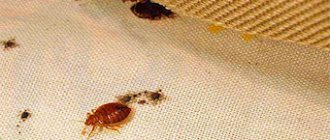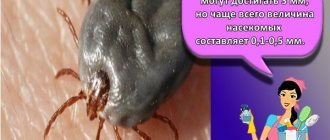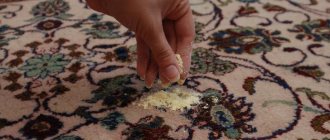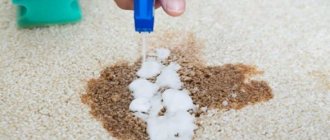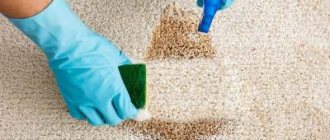- Getting rid of fleas on the carpet: cleaning
- Chemicals against fleas on carpet
- Home remedies for fleas
- DIY flea trap
- Preventive measures
Various types of fleas can live in carpets. Insect infestation is possible even if there are no animals in the house. It is necessary to destroy parasites in a timely manner to prevent further spread of fleas. Therefore, every person should know how to get rid of fleas on the carpet.
Getting rid of fleas on the carpet: cleaning
The first and safest way to get rid of parasites is to clean carpets with a vacuum cleaner. This method does not pose a danger to people and animals, like chemicals, and does not require investment.
How to get rid of fleas using a vacuum cleaner:
- Place the special attachment on the vacuum cleaner and insert the disposable bag. Work the carpet thoroughly, moving in stripes. Vacuum baseboards and corners in the room, and the space under furniture. Clean the areas where your pet likes to rest. If there are a lot of insects, vacuum daily for 1-2 weeks.
- Vacuum the upholstered furniture throughout the apartment. Vacuum the bottom of the furniture especially thoroughly. Be sure to touch the middle, up to 1 meter high, because fleas jump and move high.
- When you finish cleaning, take the vacuum cleaner bag outside and do not leave it in the house. Place the bag in a bag and tie it tightly, then throw it away. These steps will prevent fleas from reappearing on the carpet. If your vacuum cleaner has another container instead of bags, carefully empty the garbage from it into a plastic bag. Tie the bag tightly and throw it in a container outside. Rinse the container thoroughly using household chemicals.
Replace with new or rewash pet bedding. It is recommended to wash at the highest temperature until the parasites completely disappear. Wash bedspreads and small rugs.
Steam cleaning of upholstered furniture and carpets helps get rid of fleas. If you have not yet acquired a steam cleaner, you can rent the device from specialized companies or stores. Hot steam destroys not only adult insects, but also laid eggs. There is another option - contact a cleaning company and order steam cleaning.
Appearance
Only a specialist can distinguish one type of flea from another. These differences are so minute that they don’t matter to the average person. All varieties of fleas look approximately the same and lead a similar lifestyle:
- body oblong, laterally flattened, about 3 mm in length;
- the abdomen at the end is raised to the top;
- the head is practically invisible;
- The color of young individuals is black, mature parasites are brownish;
- three pairs of limbs, the hind ones somewhat longer, provide the insects with jumping ability.
The mouthparts are piercing-sucking. The sense of smell is well developed. They feed on blood. They prefer animals, but when the premises are heavily infested or there is no “full” food source, they attack humans.
Carpet fleas are pictured below.
Carpet fleas
Chemicals against fleas on carpet
If the carpet has long pile or there are too many fleas, you cannot do without special products. Now there are many drugs on the market to suit every taste and budget. All products have a chemical composition, so when using insecticides it is important to follow safety precautions.
The cheapest and most accessible means against parasites are aerosols and sprays (Combat, Dichlorvos, Raptor and others). Sprays are convenient to use for carpet treatment, spraying insecticide over the pile.
Concentrated emulsions based on insecticides are also effective in killing fleas. Liquid products are produced in different volumes. The most effective insecticides are fenthion, chlorpyrifos and malathion. They are contained in drugs from Get, Karbofos, Medilis.
Concentrates are diluted with water according to the instructions on the package. All preparations have a pungent odor, but after dilution the aroma becomes less strong.
The diluted solution is poured into a spray bottle and the carpet is sprayed with insecticide. But it is more effective to rub the drug into the pile with a rag or brush. After processing the front side, the back side is irrigated with a sprayer. When using chemicals, use protective measures - gloves, respirators and special clothing.
The insecticide will need to sit on the carpet so that all the parasites die. The holding time is usually at least a day. The next day after treatment, the carpet should be vacuumed to collect dead insects.
After vacuuming, remove the applied product. There are two ways to do this:
- Take the carpet to a dry cleaner or car wash.
- Wash the carpet yourself using a brush and a solution of soap and baking soda. For 1 liter of water you will need 40 grams. soda
Remember that before treating with chemicals, you must remove children and animals from the premises, and put on protective clothing yourself.
Danger and harm caused
When a flea bites, it injects saliva into the wound, which prevents rapid blood clotting. This may cause an allergic reaction. In addition, when attacked by parasites, a person experiences severe itching, so he scratches his skin. This increases the risk of infection of the integument. Many pathogenic microorganisms can persist in the saliva of fleas.
Thus, these parasites are capable of acting as carriers of such dangerous diseases as:
- anthrax;
- plague;
- tularemia;
- typhus;
- listeriosis;
- hepatitis;
- encephalitis.
Insect bites can cause helminth infection in humans. In rare cases, due to individual intolerance to the parasite's saliva, people develop migraines and sleep disorders.
Fleas are carriers of many diseases.
Home remedies for fleas
If for some reason the use of insecticidal preparations is impossible, or residents do not want to resort to such methods, you can try to kill fleas using traditional methods.
How to eliminate parasites using home remedies:
- Mix vinegar, camphor and triple cologne in equal proportions. Treat floors, baseboards and pile coverings using a sprayer.
- Use salt and borax, spreading the substances in a thin layer over the entire surface of the carpet. Leave for one night. The next morning, thoroughly vacuum the carpet. Keep pets off the carpet until all infestations are gone. Crystalline substances stick to insects, causing them to bleed when rubbed, causing them to die.
- Dissolve table salt and baking soda in a small amount of water. Treat the carpet with this mixture and leave for 12 hours. Then clean with a vacuum cleaner.
- Scented herbs repel fleas. Place sprigs of wormwood or tansy in the corners of the room and near the front door to drive out insects.
- Essential oils of eucalyptus, citrus or lavender are used to eliminate fleas. Add essential oil to the water and wash the floors with this solution. Apply the oil itself to the carpet pile in several places.
- The scent of lemon repels fleas. Take 1-2 lemons and cut them into thin slices. Boil lemon slices in two liters of water. After boiling, turn off the stove and let the broth brew. In the morning, pour water from the pan into a spray bottle and spray the carpet with the broth.
- Food grade diatomaceous earth can help get rid of fleas if you sprinkle it on your carpet. Diatomite is made from frozen algae that damages the insect's body. Treat your pet's bedding and remove it for 2-3 days. Then clean the bedding with a vacuum cleaner and wash at high temperature.
To kill parasites, carpets are exposed to low temperatures or exposed to direct sunlight. Such procedures even kill insect eggs.
How to detect pests
In most cases, people living in an apartment first begin to feel severe itching of the skin on their legs and feet. After a bite, the flea immediately jumps away, so it is difficult to notice.
Small red dots remain on the skin. Having noticed them, a person can already determine that there are fleas in the house. Later, when the number of parasites increases, they can be easily seen on the skin.
There are many additional ways to detect insects living in carpet pile. The simplest of them is to start sweeping the surface with a broom.
The parasites will try to jump away from the dangerous area and can be seen. This method is especially effective when there are large numbers of insects.
Alternatively, you can take adhesive tape and run it over the surface of the pile. Parasites can stick to it. To examine them, it is better to use a magnifying glass. To identify parasites, you can walk on the carpet wearing white socks. Fleas are attracted to light colors. It is easy to see insects on the fabric.
DIY flea trap
Traps help concentrate insects in one place to make it easier to get rid of them. You can make your own flea trap from scrap items.
How to make a flea trap:
- Take a small cup and pour water into it.
- Add a little liquid soap to the water and stir until completely dissolved.
- Place a cup of soapy water next to the wall, and place a lamp or night light near the cup.
- Turn on the light at night. The insects will move towards the light and fall into the bowl of water. Parasites will not be able to get out of soapy water.
Limit access to the trap to pets and small children, while trying to leave an open path for insects.
Another trap option is a large candle. Light a candle and place it in a glass or plate, leaving the structure on the floor. The light attracts insects, causing them to jump onto the candle and stick to the hot wax. In case of serious infestation, you will need to place several traps in different places.
Routes of penetration
Owners of dogs and cats know what a carpet flea looks like. Since animals are often the source of infection. Parasites do not live on a pet’s body, but prefer to stay in close proximity. When they get into a person’s house, they hide under the floor, on the back of the furniture. But the most comfortable refuge is a carpet on the floor, a carpet with a pile.
It is more difficult to understand which insect bites painfully or hides in carpets if there are no pets in the apartment. Fleas live in damp basements, hallways, and near trash cans. In case of severe infestation or lack of food, they sneak into the apartment through small cracks in the wall, doorways, and along electrical wires.
On a note!
It is important to determine where the pests came from in the apartment. If they live in basements, hallways, or attics, the whole house needs to fight fleas together. Seek help from specialists to carry out professional disinsection, and notify the relevant authorities about the current situation. Otherwise, it will be impossible to clean your own apartment forever.
Preventive measures
To prevent re-infection, keep the house clean, regularly ventilate the room, and prevent the formation of dampness.
Flea prevention includes:
- Periodically wash the floors with infusion of eucalyptus, wormwood or tansy.
- If you have pets, pay special attention to brushing them and checking their fur.
- Pets require regular preventative treatment. Bathe your animals with anti-flea shampoo.
- Buy flea collars. They are made on the basis of chemicals and effectively protect against parasites. Remember that the collar requires replacement after 1-2 months of use.
- In addition to collars, infected animals require medication. The veterinarian will help you choose a drug based on the weight and characteristics of the pet.
- Make sure there are no fleas in the basement. If you find parasites, call a pest control service, or treat the room with insecticides yourself.
- It is important to regularly air carpets, rugs, blankets and pillows, and take them outside to dry in the sun.
If you can’t get rid of fleas on your own, or they appear in the apartment again, the only way out is to contact a pest control service.
Reasons for their appearance
It is extremely difficult to protect yourself from the appearance of blood-sucking pests. In the environment, these insects are common; there are many “specialized” species: dog, cat, bed and other types of these blood-sucking insects. In the absence of a main “source” of food, any warm-blooded animal can become a victim of a flea, so even dog fleas can bite a person.
Main factors of infection:
- Flea eggs are brought from the street on shoes, clothes, and other things.
- Old furniture, rugs and other home textiles can also be a good home.
- An unpleasant “surprise” may also await you on your pet’s fur after a walk.
In outdoor conditions, the life cycle of insects changes significantly. Eggs and larvae are extremely sensitive to low temperatures and ultraviolet radiation. They are able to develop only in conditions that are comfortable for themselves, the main ones being heat and high humidity. This is why the basements of apartment buildings are often infested with fleas, which poses a direct threat to the residents of the first floor. In the private sector, the threat only increases; there is always the risk of bringing in uninvited guests straight from the street.
The scale of sabotage
Fleas in the house should be dealt with immediately after they appear. If measures are not taken in time, the presence of parasites will cause many problems. Fleas are capable of establishing numerous colonies. Their bites can provoke:
- infection with various diseases;
- itching;
- allergies.
When you see an insect in your apartment, you shouldn’t panic; everything can be fixed.
The most common type of fleas are house parasites.
Signs of infection
Insect bites often appear as a small skin rash. In addition, there is severe itching. With local infection, bite wounds become larger. Boils may develop.
If the flea was a carrier of dangerous viruses or bacteria, the first symptoms of the disease appear within 4-21 days after the end of the incubation period.
Depending on the type of infection, a person may experience the following symptoms:
- increased body temperature;
- stomach ache;
- enlarged lymph nodes;
- tachycardia;
- nausea;
- deterioration of general condition, etc.
If these symptoms appear, you should consult a doctor for tests necessary to clarify the diagnosis and prescribe treatment.
How can you clean a very dirty and old carpet, depending on the coating?
When removing stubborn dirt, it is worth considering the color and type of pile. This information will help you choose the right effective and gentle remedy.
Pile type
For long-haired hair, use a soap solution with good foam. It is applied only with a soft cloth. Hard brushes and sponges can ruin the appearance of the product. The most serious stains are additionally treated with a steam cleaner; it is also recommended to purchase special equipment.
There are much fewer problems with short pile. Heavily soiled carpets are cleaned with dry and liquid products. Folk recipes will not harm him either. This type of carpet dries quickly and accumulates less dust.
Color
For dark carpets it is not recommended to use starch, soda or powder. They leave behind ugly stains.
It's better to take:
- vinegar,
- turpentine,
- ammonia.
It is safer to clean white carpets with special products; you can also use:
- soda,
- salt,
- laundry soap.
But lemon juice will leave yellow marks.
Material: viscose, silk, synthetic
Before treating the carpet with any means, look at the label. Natural materials (wool or viscose) require careful handling.
From available means, it is best to use starch or soda; it is also worth purchasing high-quality chemicals for carpets.
Synthetic carpets are easier to care for. It is enough to vacuum them regularly. Stains must be removed while they are fresh, using any convenient means. This way there will be no unnecessary hassle with the carpet. It is better to dry clean silk carpets.
Read more about how to clean wool carpets in this article.
What should you do first?
If fleas appear at home and you don’t know what to do, start with these simple steps:
In the photo there are fleas on the floor in the house:
And in the next photo they are on the cat’s bed:
If fleas appear at home, you should combat them comprehensively, adhering to the following plan:
After treatment, appropriate measures should also be taken to prevent fleas from reentering the premises.
“We had such joy - there was not a single living creature in the house except me and my mother. And then after vacation I see a flea in the house on the balcony. At first I thought that she got there by accident, and then I was bitten at night, then my mother started complaining about “bugs.” I started clearing out the rubble on the balcony, and there were thousands of fleas there. We have a balcony right above the basement, but our neighbors have a dog living on their balcony. Well, in short, for three days I flooded the house with Dichlorvos Neo. Dichlorvos is such a good product, it doesn’t stink, unlike the old one. The fleas disappeared, but the neighbors also poisoned them. I don’t know, maybe I’ll also have to work on the basement, but my money won’t be enough for that.”
Lesya, Yakutsk
Let's start with the first step - choose the means with which we will poison fleas on a pet and in the house in general.
Article information
wikiHow works like a wiki, which means that many of our articles are written by multiple authors. During the creation of this article, 9 people, including anonymously, worked to edit and improve it.
Category: Insects
In other languages:
English: Get Rid of Fleas in Carpets, Español: deshacerse de las pulgas en las alfombras, Português: Remove Pulgas do Carpete, Italiano: Eliminare le Pulci dalla Moquette, Deutsch: Flöhe im Teppich loswerden, Français: se débarrasser de puces installées dans une moquette, Bahasa Indonesia: Membasmi Kutu di Karpet, Nederlands: Van vlooien in je vloerbedekking afkomen, Čeština: Jak odstranit blechy z koberce, العربية: التخلص من البراغيث بال سجاد, Tiếng Việt: Loại bỏ bọ chét trên thảm, 한국어: 카펫에 생긴 벼룩 제거하는 방법, ไทย: กำจัดหมัดติดตามพรม, 中文: 消灭地毯里的跳蚤,日本語: カーペットのノミを駆除する, हिन्दी: कार्पेट में मौजूद पि (Fleas) से छुटकारा पाएँ
This page has been viewed 51,252 times.
Was this article helpful?
Not really
Bathing a cat with soapy water
The process of bathing a cat is difficult, since these animals are terribly afraid of water (with rare exceptions). Bathing your pet with tar soap will cause him even more inconvenience because the smell is too strong. In this situation, you cannot do without an assistant.
Bathing rules:
- Prepare a bath or basin with water, a towel and soap in advance.
- Check the water temperature – it should correspond to the cat’s body temperature.
- Put mittens on your hands and your assistant's.
- Wet the animal's fur and thoroughly soap it.
- It is easy to massage your pet so that he is not afraid.
- After 10 minutes, start rinsing off.
- If you see that the fleas are moving, you should repeat the manipulations.
- Wrap the cat in a towel.

